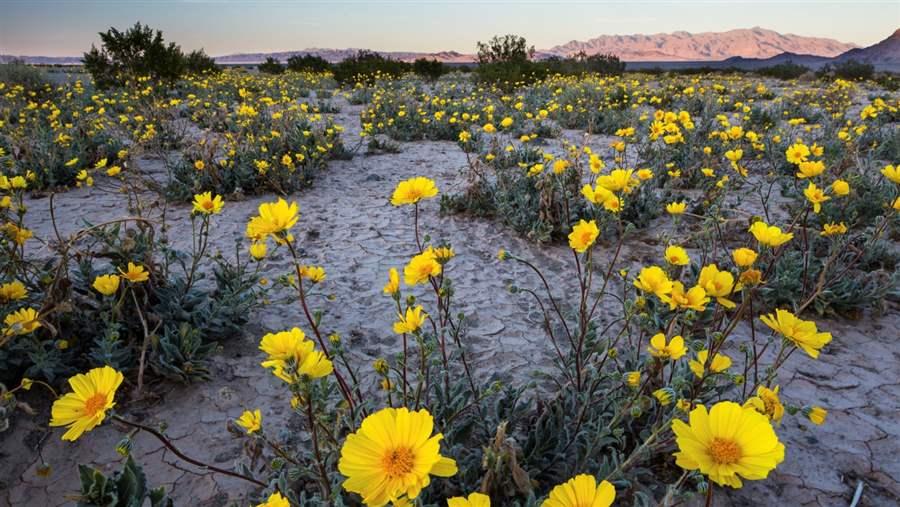Pew Commends BLM Decision on Desert Renewable Energy Conservation Plan
Balanced plan will safeguard iconic desert wildlife and landscapes
 © Bob Wick, BLM
© Bob Wick, BLMWildflowers in the Silurian Plain that is part of the Desert Renewable Energy Conservation Plan in eastern California.
WASHINGTON—The Bureau of Land Management (BLM) today released its final Record of Decision on the Desert Renewable Energy Conservation Plan (DRECP), which will permanently protect significant areas of public lands in the California desert—including the Silurian Valley, Mayan Peak, and Chuckwalla Bench. The plan also identifies certain areas of public lands in the desert that will be available for potential renewable energy development.
Matthew Skroch, officer of The Pew Charitable Trusts’ U.S. public lands program, issued the following statement:
The Desert Renewable Energy Conservation Plan is a historic conservation gain for public lands in California and across the West. It provides a precedent-setting blueprint for how to balance renewable energy development with conservation on our nation’s public lands. As this plan moves forward, we look to BLM to follow through with a strong commitment to permanently protecting more than 4 million acres of public lands, in addition to identifying areas for potential renewable development. A key step would be withdrawing the portion of the DRECP project area that would be set aside as new national conservation lands from mining to ensure they are safeguarded now and for future generations.
This is a responsible plan that will ensure protection for the iconic species that make their home in the desert, including bighorn sheep, the Mohave ground squirrel, desert tortoises, and Gila monsters. We commend the Bureau of Land Management for listening to stakeholders and making key improvements in the plan as it evolved, including safeguarding critical landscapes like the Silurian Valley, Chuckwalla Bench, and Mayan Peak.”
The Pew Charitable Trusts is driven by the power of knowledge to solve today’s most challenging problems. Learn more at pewtrusts.org.




